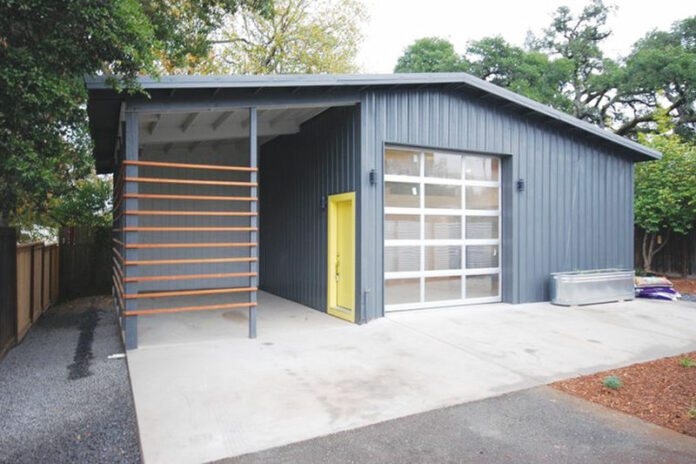New state laws force revision of city’s ADU ordinance
This fall, the California legislature passed a slew of new housing laws, aimed at easing California’s housing crisis by loosening restrictions on accessory dwelling units (ADUs), otherwise known as granny units.
These laws — which include AB 881, AB 670 and 671, AB 587, SB 13, AB 68 — will go into effect on Jan. 1, and cities around the state are racing to make their ADU ordinances comply with the new regulations.
The new laws address both ADUs and JADUs (junior accessory dwelling units). A JADU is the conversion of a small part of an existing house, like a spare bedroom, into a separate unit with an external entrance.
At the Sebastopol City Council meeting on Dec. 3, City Planner Kari Svanstrom laid out a series of changes to Sebastopol’s Accessory Dwelling Unit (ADU) ordinance. She began her presentation by saying that the city was in pretty good shape thanks to the forethought that went into its ADU ordinance two years ago.
“The last time the city adopted updates to our ordinance on accessory dwelling units was in 2017,” Svanstrom said. “At that time, we didn’t just do what was required by state law; we looked at a lot of best practices … and a lot of those best practices are now state law.”
As a result, many of Sebastopol’s ADU rules — no minimum lot sizes for ADUs; no owner occupancy requirement; the ability to add both an ADU and JADU on a single lot — are already in compliance.
Nonetheless, the new state laws do require several significant changes to Sebastopol’s ADU ordinance, which have the potential to radically change the density and character of Sebastopol’s residential neighborhoods. These include the abolition of parking requirements and a reduction in required setbacks.
Parking requirements gutted
The new laws’ abolition of parking requirements raised eyebrows on the council. As part of AB 881, if a homeowner converts his or her garage or carport into an ADU, the city can no longer require replacement parking.
“So imagine a single family house with a two car garage — could both bays of that garage be converted?” Mayor Patrick Slayter asked.
Svanstrom confirmed that, yes, that was the case.
“So that would remove two parking places that then do not need to be replaced. So you remove the parking and you add residential load?” Slayter said in disbelief. “So you could add an ADU and a JADU and be essentially in the negative-four parking-place category … plus how ever many other people live there.”
Yes, Svanstrom said, that’s a possibility.
Setbacks shrunk
The other major change to Sebastopol’s ADU ordinance involved setbacks. A setback is the minimum distance which a building must be “set back” from the street or property line.
The setback for newly constructed ADUs under AB 881 is between 0 and 4 feet. Sebastopol currently requires a 5-feet or more setback for one-story ADUs. The council changed this to 4-feet to comply with the new law. (Two story ADUs would require the same setback as the existing house.)
Staff recommended that for new one-story ADUs close to the property line, windows facing the property line be either frosted or clerestory (above the average line of sight) to save neighbors from the sensation that someone is peering in at them.
New additions OK’d on multi-family properties
The new ADU rules allow for the conversion of non-living areas of apartment buildings to be converted into new apartments, up to 25% of the existing units. This includes garages, storage areas, attics and basements. This means if a landlord has a fourplex with four covered garages, they could replace one of the garages with a new apartment. Landlords would not have to supply a parking space for that new apartment or a replace the parking space that was lost to the conversion.
Councilmember Sarah Gurney asked how many apartment complexes in Sebastopol this might affect. Svanstrom wasn’t sure, but noted that few apartment buildings in Sebastopol have basements or attics. There are several apartment buildings with covered parking, however, and some of this parking could now be converted to additional units.
Some critics of the new ADU laws say they will lead to the “triplex-ization of California” and that this is the end of single-family zoning in the state, but housing advocates have dismissed these objections as the sort of NIMBYism that has led to California’s current housing crisis, in which California ranks 49th in housing units per resident among all the states in the nation, second only Utah.
The Sebastopol City Council waived the first reading of this item and approved the language, conditioned on some small text changes requested by the council. This item will return for final approval on the council’s consent calendar at the Dec. 17 council meeting.
The county of Sonoma is also revising its ADU ordinance to comply with state regulations. We will discuss those changes in an upcoming article.
56
F
Healdsburg
April 17, 2025








